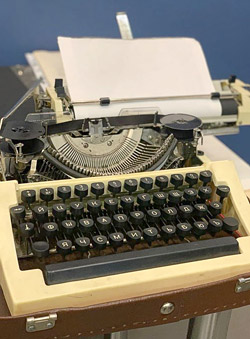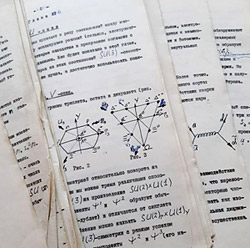
Electronic english version since 2022 |
The newspaper was founded in November 1957
| |
|
Number 9 (4757) |
Memorial Cabinet rarities
 Printed word
Printed word
The profession of a typist, "a woman working on a typewriter" (Ushakov's dictionary), is already a thing of the past. And although typists type fast (and in that sense could still be in demand today), they have been replaced by voice recognition that is even faster.
But some thirty or forty years ago, a man of science could not do without a typist (unless, of course, he was the lucky owner of a personal "Lyubava" or even that "Robotron"). Manuscripts to be sent to journals or submitted to colleagues were given to a typist for retyping or to a friend typist that took "hackwork" home to make some extra money.
Up to five copies could be printed at a time, depending on the mark of the machine. For this purpose, the so-called "copy paper" was placed between sheets of paper - thin sheets of tracing paper colored on one side.
 To correct a mistake, they used "putty"-corrector and then printed the correct version over the top.
To correct a mistake, they used "putty"-corrector and then printed the correct version over the top.
Complex physical formulae were handwritten into printed articles; there were also special typewriters for printing formulae (or interchangeable typing heads for advanced imported machines).
On the photo: a typewriter from the collection of the JINR Museum of History of Science and Technology, a typed article from the Bruno Pontecorvo's Memorial Cabinet at the Laboratory of Nuclear Problems.
DLNP Scientific Communications Group